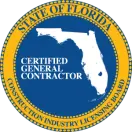Extending Your Roof’s Lifespan with Proper Storm Damage Repairs
Maintaining a roof is not just about aesthetics or keeping the rain out—it’s about ensuring the long-term durability and safety of your home. Storm damage is one of the most significant threats to your roof’s lifespan. Whether it’s a heavy rainstorm, hail, or high winds, the impact can be severe, leading to minor issues that, if neglected, can turn into major problems. Proper storm damage repairs are crucial in extending your roof’s lifespan and safeguarding your home.
Understanding the Impact of Storms on Your Roof
Storms come with a variety of elements—strong winds, rain, hail, and sometimes even snow. Each of these can have different impacts on your roof. Wind can lift shingles, exposing the underlayment and roof deck to moisture. Hail can cause cracks or even punctures in the roofing material, while heavy rain can lead to leaks if the roofing system is compromised. Even snow and ice can create ice dams, leading to water backup and potential leaks. Understanding these impacts is the first step in recognizing the importance of timely repairs.
Signs of Storm Damage You Should Never Ignore
After a storm, your roof may not show obvious signs of damage immediately. However, there are subtle indicators that your roof may need repairs. Missing or lifted shingles, granule loss, dents in metal components, and water stains on ceilings are clear signs of damage. Inspecting your attic for leaks or sunlight peeking through is also essential. Ignoring these signs can lead to bigger problems like water damage, mold growth, or structural issues that can be costly to fix.
The Role of Professional Inspections in Roof Maintenance
While you can perform a basic inspection, a professional roofer has the expertise to identify hidden issues. A thorough inspection includes checking the entire roofing system, including flashing, gutters, ventilation systems, and structural integrity. Professionals can spot potential problems that are not visible to the untrained eye, ensuring that any storm damage is repaired promptly to prevent further deterioration.
Common Types of Storm Damage and Their Repairs
Storm damage can vary depending on the type of storm and the materials used in your roof. Asphalt shingles may need replacement if they are cracked or missing. Metal roofs might require patching for small punctures or resealing joints. Tile roofs can have broken tiles replaced to prevent leaks. Understanding the specific needs of your roofing material can help in executing proper repairs that will extend your roof’s lifespan.
Importance of Timely Storm Damage Repairs
Delaying repairs after a storm can significantly reduce your roof’s lifespan. Water infiltration, even from a small leak, can cause rot, mold, and structural damage over time. Additionally, small issues like loose shingles can worsen with the next storm, leading to more extensive damage. By addressing storm damage immediately, you prevent minor problems from escalating and extend the overall life of your roof.
Selecting the Right Roofing Contractor for Storm Damage Repairs
Choosing a reliable roofing contractor is critical to ensuring quality repairs. Look for a contractor with experience in storm damage repairs, proper licensing, insurance, and good reviews from previous clients. A trustworthy contractor will also provide a detailed inspection report, a clear explanation of the needed repairs, and a fair estimate. Investing in a quality contractor can save you from future headaches and expenses.
Routine Maintenance to Complement Storm Damage Repairs
In addition to storm damage repairs, routine maintenance is key to extending your roof’s lifespan. Regular inspections, cleaning gutters, removing debris, and ensuring proper attic ventilation all contribute to a healthier roof. Maintenance should be scheduled at least twice a year and after every major storm to ensure any issues are caught early.
Preventive Measures to Protect Your Roof from Storm Damage
While you can’t control the weather, there are preventive measures you can take to minimize storm damage. Trimming trees near your roof, ensuring proper insulation to avoid ice dams, and reinforcing weak areas of the roof can all help. Additionally, investing in impact-resistant shingles or upgrading to a more durable roofing material can provide better protection against severe weather.
The Long-Term Benefits of Proper Storm Damage Repairs
Proper storm damage repairs do more than just fix immediate issues; they contribute to the long-term health of your roof. A well-maintained roof improves energy efficiency, reduces the likelihood of expensive future repairs, and enhances the value of your home. By keeping your roof in top condition, you ensure it can withstand future storms and provide reliable protection for years to come.
FAQs
How often should I inspect my roof for storm damage?
It’s recommended to inspect your roof at least twice a year and after any major storm. Regular inspections can help catch small issues before they turn into bigger problems.
What are the most common signs of storm damage to a roof?
Common signs include missing or lifted shingles, granule loss, dents in metal components, water stains on ceilings, and visible leaks in the attic.
Can I perform storm damage repairs myself?
While minor repairs like replacing a shingle might be manageable, it’s advisable to hire a professional for a thorough inspection and repair to ensure all issues are properly addressed.
How can I prevent storm damage to my roof?
Preventive measures include trimming trees near your roof, ensuring proper attic insulation, and upgrading to impact-resistant shingles or a more durable roofing material.
What should I do if I suspect storm damage to my roof?
Contact a professional roofing contractor for an inspection as soon as possible. They can assess the damage and recommend the necessary repairs to prevent further issues.
Is storm damage covered by homeowner’s insurance?
In many cases, storm damage is covered by homeowner’s insurance. However, coverage varies, so it’s important to review your policy and discuss with your insurance provider.
Conclusion
Proper storm damage repairs are essential to extending your roof’s lifespan and ensuring the safety and integrity of your home. By recognizing the signs of damage, investing in timely repairs, and maintaining your roof regularly, you can protect your home from the elements and avoid costly future repairs. Whether it’s routine maintenance or emergency repairs after a storm, taking proactive steps today will pay off in the long run, keeping your roof strong and durable for years to come.














